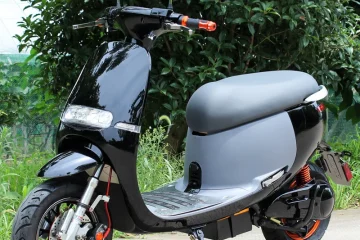Imagine a land where serene turquoise lakes reflect towering snow-capped peaks, and the only sounds are the gentle whispers of the wind and the soft crunch of your boots on the trail. Welcome to the Gokyo Lakes Trek, a hidden gem in the heart of the Himalayas that offers a peaceful and breathtaking escape from the hustle and bustle of everyday life. Nestled within the Sagarmatha National Park, this trek takes you to the stunning Gokyo Lakes, a series of pristine glacial-fed bodies of water that are among the highest in the world.
The Gokyo Lakes Trek is perfect for adventurers seeking tranquility amidst nature’s grandeur. Unlike the more popular Everest Base Camp Trek, this route provides a quieter alternative, allowing trekkers to immerse themselves in the serene beauty of the Everest region. The journey offers spectacular views of some of the world’s highest peaks, including Everest, Lhotse, Makalu, and Cho Oyu, as well as opportunities to experience the rich Sherpa culture and hospitality. In this article, we’ll explore the details of the Gokyo Lakes Trek, including its highlights, cultural experiences, and practical tips for planning your Himalayan adventure.
Why Choose the Gokyo Lakes Trek?
The Gokyo Lakes Trek is a unique adventure that combines the allure of the Everest region with the serenity of pristine glacial lakes. This trek offers a quieter alternative to the bustling Everest Base Camp Trek, making it an ideal choice for those seeking peace and solitude in nature. Here are some compelling reasons to choose the Gokyo Lakes Trek:
1. Breathtaking Scenery
The trek provides some of the most breathtaking views in the Everest region, with stunning panoramas of Everest, Lhotse, Makalu, and Cho Oyu. The highlight of the trek is the Gokyo Lakes themselves—six turquoise glacial lakes that are among the highest in the world. The reflection of the surrounding peaks in these clear waters creates a visual spectacle that is nothing short of magical. Additionally, the ascent to Gokyo Ri, a nearby peak, offers a 360-degree view of the Himalayas, including a magnificent vista of the entire Everest range.
2. Tranquility and Solitude
Unlike the crowded trails leading to Everest Base Camp, the Gokyo Lakes Trek offers a peaceful and less crowded experience. The trails are quieter, allowing trekkers to fully immerse themselves in the natural beauty and serenity of the region. This tranquility provides an excellent opportunity for introspection and relaxation, making the trek a true escape from the pressures of everyday life.
3. Cultural Encounters
The trek takes you through several traditional Sherpa villages, where you can experience the rich culture and warm hospitality of the local people. The Sherpa community is renowned for its resilience and friendliness, and you’ll have the chance to visit ancient monasteries, participate in traditional ceremonies, and learn about the spiritual and cultural heritage of the Himalayas. The village of Khumjung, for example, offers insights into Sherpa life and traditions, as well as stunning views of the surrounding mountains.
4. Unique Landscapes
The Gokyo Lakes Trek offers a diverse range of landscapes, from lush rhododendron forests and terraced fields to rugged alpine terrains and glacial moraines. The trek also crosses the Ngozumpa Glacier, the longest glacier in the Himalayas, providing a unique perspective on the region’s glacial geology. This variety of landscapes keeps the trek exciting and visually captivating, with each day offering new and diverse vistas.
5. Adventure and Acclimatization
For those planning to tackle the Everest Base Camp in the future, the Gokyo Lakes Trek provides an excellent acclimatization opportunity. The trek reaches altitudes of over 5,000 meters, helping trekkers adapt to the high-altitude environment. The challenging ascent to Gokyo Ri also offers a sense of adventure and achievement, rewarding trekkers with unparalleled views of the Himalayan giants.
Trekking Highlights
1. The Gokyo Lakes
The Gokyo Lakes are undoubtedly the crown jewel of the trek. These six glacial lakes, situated at altitudes ranging from 4,700 to 5,000 meters, are considered sacred by both Hindus and Buddhists. The largest and most significant lake is Dudh Pokhari, which is often used for religious rituals and celebrations. The stunning blue-green waters of the lakes are surrounded by soaring peaks, creating a tranquil and awe-inspiring setting.
2. Gokyo Ri
Gokyo Ri, standing at 5,357 meters (17,575 feet), is a popular viewpoint that offers one of the most spectacular panoramas in the Everest region. The climb to the summit is challenging but rewarding, with views of four of the world’s highest mountains—Everest, Lhotse, Makalu, and Cho Oyu. The sight of these majestic peaks, along with the shimmering Gokyo Lakes below, is a highlight of the trek and an unforgettable experience.
3. Ngozumpa Glacier
The Ngozumpa Glacier is the largest glacier in the Himalayas and a significant feature of the Gokyo Lakes Trek. Trekking alongside this massive ice flow provides a unique perspective on the power and beauty of nature. The glacier’s rugged terrain and intricate ice formations add an element of adventure to the trek, as you navigate the trails alongside this dynamic and ever-changing landscape.
4. Sherpa Villages
The trek passes through several traditional Sherpa villages, including Namche Bazaar, Dole, and Machhermo. These villages offer a glimpse into the daily lives of the Sherpa people, renowned for their mountaineering skills and hospitality. Namche Bazaar, the gateway to the Everest region, is a bustling hub of activity with shops, cafes, and a vibrant local market. It’s also an excellent place to acclimatize and learn about the region’s history and culture.
5. Sagarmatha National Park
The Gokyo Lakes Trek is located within Sagarmatha National Park, a UNESCO World Heritage Site known for its stunning landscapes and diverse wildlife. The park is home to endangered species such as the snow leopard and red panda, as well as a wide variety of birds and mammals. Trekking through this protected area offers a chance to appreciate the rich biodiversity of the Himalayas and the efforts to conserve this unique environment.
Detailed Trekking Itinerary
The Gokyo Lakes Trek typically takes about 12 to 14 days, depending on your pace and acclimatization needs. Here’s a detailed itinerary to give you a sense of what to expect:
Day 1: Arrival in Kathmandu
- Altitude: 1,400m
- Activities: Arrive in Kathmandu, explore the vibrant streets, and prepare for the trek.
Day 2: Flight to Lukla and Trek to Phakding
- Altitude: 2,610m
- Duration: 35-minute flight, 3-4 hour trek
- Highlights: Scenic flight to Lukla, trek through pine forests to Phakding.
Day 3: Phakding to Namche Bazaar
- Altitude: 3,440m
- Duration: 5-6 hours
- Highlights: Cross suspension bridges, enter Sagarmatha National Park, explore Namche Bazaar.
Day 4: Acclimatization Day in Namche Bazaar
- Altitude: 3,440m
- Activities: Explore Namche Bazaar, visit the Sherpa Museum, hike to Everest View Hotel for panoramic mountain views.
Day 5: Namche Bazaar to Dole
- Altitude: 4,038m
- Duration: 5-6 hours
- Highlights: Trek through rhododendron forests, enjoy views of Ama Dablam and Thamserku.
Day 6: Dole to Machhermo
- Altitude: 4,470m
- Duration: 4-5 hours
- Highlights: Trek through yak pastures, stunning views of Cho Oyu.
Day 7: Machhermo to Gokyo
- Altitude: 4,800m
- Duration: 4-5 hours
- Highlights: Arrive at Gokyo, explore the first lake, view the Ngozumpa Glacier.
Day 8: Acclimatization Day and Ascent to Gokyo Ri
- Altitude: 5,357m
- Activities: Climb Gokyo Ri for sunrise views, explore additional Gokyo Lakes.
Day 9: Gokyo to Dole
- Altitude: 4,038m
- Duration: 5-6 hours
- Highlights: Retrace steps, enjoy descending views of the mountains.
Day 10: Dole to Namche Bazaar
- Altitude: 3,440m
- Duration: 4-5 hours
- Highlights: Descend through forests, revisit Namche Bazaar for rest and exploration.
Day 11: Namche Bazaar to Lukla
- Altitude: 2,860m
- Duration: 6-7 hours
- Highlights: Final trek through the beautiful landscapes of the Khumbu region, evening in Lukla.
Day 12: Flight from Lukla to Kathmandu
- Altitude: 1,400m
- Activities: Return flight to Kathmandu, unwind, and explore the city’s cultural landmarks.
Day 13: Departure from Kathmandu
- Activities: Departure or extend stay to explore more of Nepal’s attractions.
Practical Tips for the Gokyo Lakes Trek
1. Physical Preparation
The Gokyo Lakes Trek is a moderately challenging trek that requires a good level of physical fitness. It’s essential to engage in regular cardiovascular exercise and strength training to build endurance and prepare your body for the demands of high-altitude trekking.
2. Acclimatization
Acclimatization is crucial when trekking at high altitudes. The itinerary includes rest days to help your body adjust to the elevation, but it’s important to listen to your body and take additional rest if needed. Symptoms of altitude sickness should not be ignored, and proper hydration is vital.
3. Packing Essentials
Packing appropriately is key to a successful trek. Essential items include a warm sleeping bag, layered clothing, a down jacket, waterproof hiking boots, trekking poles, and a first aid kit. Additionally, bring a reusable water bottle, water purification tablets, and high-energy snacks.
4. Permits
Two permits are required for the Gokyo Lakes Trek: the Sagarmatha National Park Entry Permit and the Khumbu Pasang Lhamu Rural Municipality Permit. These can be obtained in Kathmandu or through a trekking agency.
5. Local Guide and Porter
Hiring a local guide and porter can greatly enhance your trekking experience. Guides provide valuable insights into the culture and history of the region, while porters help carry heavy loads, allowing you to enjoy the trek without excessive physical strain.
6. Weather Considerations
The best times to trek are during the spring (March to May) and autumn (September to November) when the weather is stable and the views are clear. However, it’s crucial to be prepared for variable weather conditions, especially at higher altitudes.
Cultural Etiquette
1. Respect Local Customs
Respect the customs and traditions of the Sherpa people. Dress modestly and be polite and courteous in your interactions. Learning a few basic phrases in Nepali or Sherpa can be a nice gesture that locals appreciate.
2. Photography Etiquette
Always ask for permission before photographing people, especially in villages and monasteries. Be mindful of cultural sensitivities, and avoid disrupting religious or ceremonial activities.
3. Tipping
Tipping is customary in Nepal and is a way to show appreciation for the services of guides and porters. Budget for tips as part of your trekking expenses.
4. Environmental Responsibility
Practice Leave No Trace principles by minimizing waste and avoiding littering. Carry out all trash and be respectful of the natural environment to preserve the pristine beauty of the region.
Conclusion
The Gokyo Lakes Trek is a serene and captivating journey that offers a perfect blend of natural beauty, cultural experiences, and adventure. As you trek through the tranquil landscapes of the Everest region, you’ll be rewarded with breathtaking views, the serenity of the Gokyo Lakes, and the warmth of Sherpa hospitality. This trek is an ideal choice for those seeking a peaceful escape in the heart of the Himalayas, away from the crowds and noise of more popular routes.
Whether you’re a seasoned trekker or a nature enthusiast looking for a unique experience, the Gokyo Lakes Trek promises an unforgettable adventure that will leave you with lasting memories and a deep appreciation for the majestic beauty of the Himalayas. So lace up your boots, pack your bags, and embark on this tranquil Himalayan escape.




